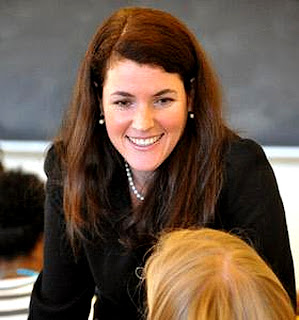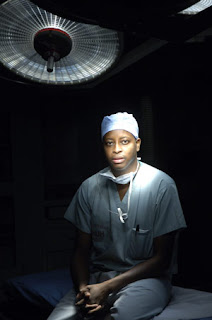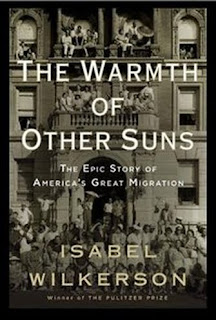Abstract 9478 This abstract will be featured in a news conference.
Study Highlights:
* Vitamin D deficiency doubled risks of fatal stroke among white people, but had no effect on stroke death in blacks.
* Researchers were surprised by the results because blacks are generally at higher risk both for stroke and for vitamin D deficiency than whites.
* Unrelated research presented also found correlations between low levels of vitamin D and death.
CHICAGO, Nov. 14, 2010 — While vitamin D deficiency is associated with fatal stroke among whites, it is not linked to more stroke deaths among blacks, according to research presented at the American Heart Association’s Scientific Sessions 2010.
Analyzing the health records of a nationally representative group of 7,981 black and white adults, researchers found that whites with deficient vitamin D levels had a doubled risk of dying from a stroke compared to whites with higher vitamin D levels.

Vitamin D3 cholecalciferol | In contrast, researchers found no relationship between fatal strokes and vitamin D deficiency among blacks, even though blacks in the study generally had a 60 percent higher risk of dying from stroke compared to whites.
These results held true after researchers accounted for various socioeconomic and stroke risk factors in both groups. Nearly 7 percent of whites in the study were vitamin D deficient, compared to slightly over 32 percent of blacks.
Researchers are surprised because previous studies have indicated blacks are both more likely to have low levels of vitamin D and more likely to have strokes compared to whites. |
“We thought maybe the lower vitamin D levels might actually explain why blacks have higher risks for stroke,” said Erin Michos, M.D., M.H.S., the study’s lead researcher and an assistant professor of medicine at Johns Hopkins University School of Medicine in Baltimore, Md. “But we did not find the same relationship between vitamin D and stroke in blacks.”
The study further shapes an emerging body of research about the potential health benefits of Vitamin D, a fat soluble vitamin involved in bone health that helps prevent rickets in children, protects against severe bone loss in adults, and potentially lowers the risks of heart disease, cancer, multiple sclerosis, diabetes and other medical conditions. Sources of vitamin D include exposure to ultraviolet B rays in sunlight, and eating fatty fish, egg yolks and fortified foods such as milk products and breakfast cereals.
Researchers, using data from the Third National Health and Nutrition Examination Survey of Americans (NHANES-III) conducted between 1988 and1994, followed the study participants for a median of 14 years. They measured vitamin D amounts based on blood levels of 25-hydroxyvitamin D, a form that represents vitamin D stored in the body.
Average levels of vitamin D were significantly lower in blacks compared to whites. By 2006, according to the National Death Index, there were a total 176 deaths from fatal stroke (116 among whites and 60 among blacks).
Through regression analysis, researchers estimated the risks of fatal stroke based on low vitamin D blood levels 15 ng/ml and race, eliminating the effects of socioeconomic status (including age, sex, income and education) and stroke health factors (including diabetes, high blood pressure, cholesterol, body mass index, smoking, physical activity and alcohol use).
Blacks may have a natural resistance to the negative effects of low vitamin D levels, which might also explain the lower frequency of bone fractures despite the higher prevalence of vitamin D deficiency among blacks, Michos said.
“Since stroke is the No. 3 cause of death in the United States, it’s important for us to consider low vitamin D as a possible risk factor for stroke at least among whites,” Michos said.
Clinical trials are needed to determine whether treating vitamin D deficiency will help lower stroke risks, she said.
Researchers only had access to death records and thus couldn’t account for stroke survivors, which potentially limits the study’s reach. Since blood levels of vitamin D were only measured at the beginning of the study, this may not have been an accurate reflection of the participants’ lifetime vitamin D status, Michos said.
Co-authors are: Jared P. Reis, Ph.D.; Wendy S. Post, M.D., M.S.; Pamela L. Lutsey, Ph.D.; Rebecca F. Gottesman, M.D., Ph.D.; Thomas H. Mosley, Ph.D.; Albert Richey Sharrett, M.D., Dr.P.H.; and Michal L. Melamed, M.D., M.H.S. No authors reported any disclosures.
NHANES-III is sponsored by the Centers for Disease Control and Prevention and the National Center for Health Statistics.
(Note: Actual presentation time: 9:45 a.m. CT, Monday, Nov. 15, 2010)
Also Note These News Tips also for release at 11 a.m. Sunday, Nov. 14, 2010
Abstract 21058 – A cross-sectional study of more than 9,000 adults in the Third National Health and Nutrition Examination Survey (NHANES-III) noted a positive association between low blood levels of vitamin D and rates of prehypertension. Prehypertension is a stage of blood pressure where prevention efforts may delay the onset of actual hypertension. Researchers say future randomized trials are needed to determine if vitamin D supplementation can prevent or delay the onset of hypertension.
(Note Actual presentation time: 4:15 p.m. CT, Monday, Nov. 15, 2010)
Abstract 12680/P2074 — While vitamin D deficiency is associated with high blood pressure, diabetes, heart failure and heart attack risk factors, a new study found that low levels of Vitamin D was also associated with reduced survival from these conditions. Vitamin D supplements improved survival rates.
(Note Actual presentation time: 9 a.m. Tuesday, Nov. 16, 2010)
Abstract 10321 — Researchers analyzing the causes of death among a group of post-menopausal women found that low levels of vitamin D were associated with higher risks of dying from cardiovascular disease and other causes. However, the risks appeared to be substantially lowered once heart disease risk factors were considered, with waist circumference being the most prominent.
(Note Actual presentation time: 2 p.m. Wednesday Nov. 17, 2010) ###
Statements and conclusions of study authors that are presented at American Heart Association scientific meetings are solely those of the study authors and do not necessarily reflect association policy or position. The association makes no representation or warranty as to their accuracy or reliability. The association receives funding primarily from individuals; foundations and corporations (including pharmaceutical, device manufacturers and other companies) also make donations and fund specific association programs and events. The association has strict policies to prevent these relationships from influencing the science content. Revenues from pharmaceutical and device corporations are available at
www.heart.org/corporatefundingIMAGE CREDIT: This file is licensed under the Creative Commons
Attribution-Share Alike 3.0 Unported license. Attribution to
Wikipedia















![Jerolyn [Renee] Chapman Navarro, PharmD, MD](https://blogger.googleusercontent.com/img/b/R29vZ2xl/AVvXsEgzkugmA0zP9Q888kbpcZVkjNPMi01Mzwe4G1DY1qGC_pVqDa4JJeyeebkyUvnbgrvr0xMv9TeK0fCp0SfoFyodBotK-n_Ee-BrERcgk2SJGu7xKK7SlDjfJ2IkmFSwinm0qBoj6RvjZ9Pd/s320/Jerolyn_Chapman_Navarro_2.jpg)




















